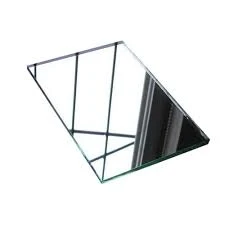

Exploring the Elegance of Mirror Glass Design
Mirror glass design is a captivating fusion of functionality and aesthetics that has become increasingly popular in contemporary architecture and interior design. This unique design element not only enhances the visual appeal of spaces but also serves a plethora of practical purposes, making it a favored choice among architects and designers worldwide.
One of the most compelling aspects of mirror glass design is its ability to create an illusion of space. In smaller rooms or areas with limited natural light, mirror glass can reflect light and visually expand the dimensions of the space. This optical trickery not only makes a room feel larger but also brighter, as the reflective surfaces bounce light around the area. Consequently, mirror glass is often used in settings such as apartments, offices, and restaurants where maximizing space is a priority.
Moreover, mirror glass can contribute to the overall aesthetic theme of a space. It can introduce a sense of modernity and sophistication, acting as a statement piece in a minimalist design. Whether used as wall panels, tabletops, or decorative accents, mirrored surfaces can add depth and complexity to an interior layout. The sleek, shiny finish of the glass complements various design styles, from contemporary to art deco, making it a versatile choice for different design aesthetics.

In addition to its aesthetic advantages, mirror glass design is also favored for its ability to blend seamlessly with other materials
. It harmonizes beautifully with wood, metal, and fabrics, creating a cohesive look in any interior scheme. Designers often use it to contrast textures—smooth mirror glass paired with rugged finishes can create a dynamic interplay that intrigues the eye.Another innovative application of mirror glass design is in architectural features such as facades and screens. Buildings clad in mirror glass reflect their surroundings, allowing them to integrate with the environment beautifully. This reflective quality can soften the impact of urban structures and enhance the interaction between indoor and outdoor spaces.
Furthermore, mirror glass design is not just about looks; it is also about sustainability. Many modern mirror glass products are designed with energy efficiency in mind. By reflecting solar heat and reducing glare, they contribute to energy savings in climate-controlled spaces. This eco-friendly aspect is increasingly important in today’s design landscape, where conscious consumerism is on the rise.
In conclusion, mirror glass design offers a multi-faceted approach to modern living and architectural expression. Through its unique blend of elegance, practicality, and innovative applications, it continues to inspire designers and captivate the hearts of homeowners, making it an enduring trend in the world of design. Whether enhancing a quaint studio apartment or forming the façade of a grand skyscraper, mirror glass remains a timeless choice that reflects both beauty and innovation.